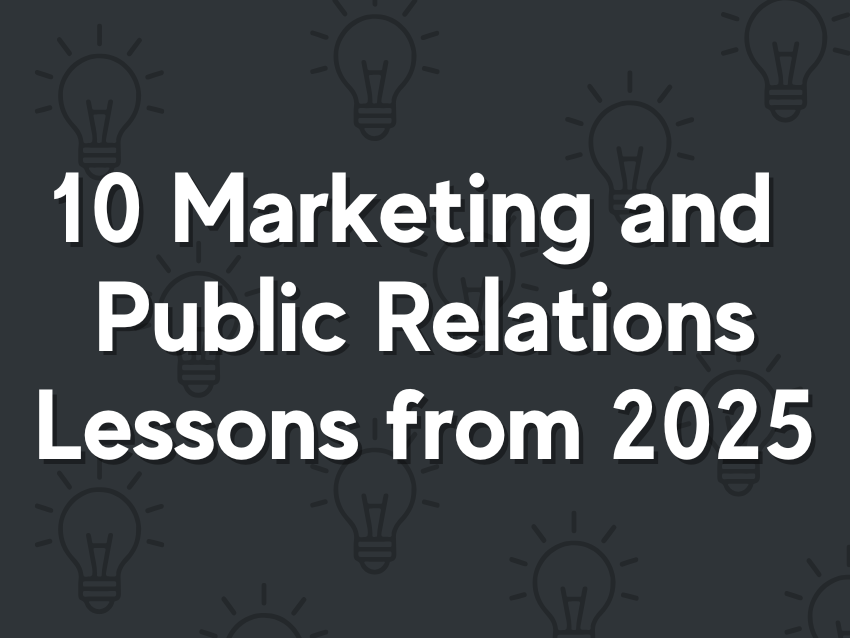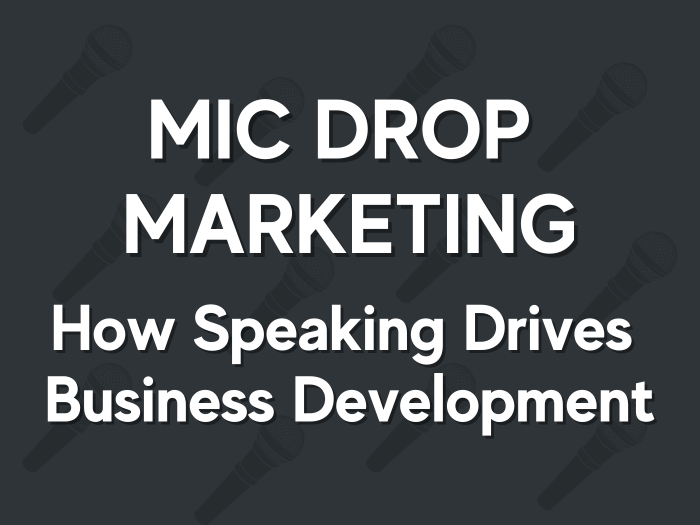“The more things change, the more they stay the same.” This saying feels more relevant than ever in today’s public relations landscape.
Yes, we’re seeing a wave of transformation. AI can generate content in seconds, newsrooms are increasingly freelance-driven and platforms like Substack are altering how stories reach the public. But despite these shifts, the core PR principles remain unchanged – you need to tell a compelling story to the right audience.
So, how do you adapt your PR strategy to stay ahead while remaining true to what works? Let’s look at trends impacting the industry and how you can plan for the coming year.
AI is Reshaping Content Creation but Human Insight Still Wins
AI has undeniably changed the game with tackling time-consuming PR tasks that don’t require emotional intelligence, such as media monitoring, drafting briefing documents and compiling coverage reports. By handling the repetitive work, AI frees your team to focus on what really matters: strategic storytelling and thoughtful follow-ups that build trust with journalists. AI should manage the process while you manage the relationships.
For pitch development, use AI to accelerate your work – not replace it. AI tools can support ideation and drafting, but they can’t think like a PR pro. No matter how well-crafted your prompts are, AI can’t replicate instinct, empathy and nuance. Instead, use AI for idea generation or to draft rough pitch templates that can be customized based on the reporter’s beat, tone and publication style. It’s also helpful to identify seasonal trends or news hooks.
Remember, PR is not just about pushing out content – it’s about telling the right story, at the right time to the right audience. And that still takes a human touch.
Journalists Want the Takeaway—Fast
A theme throughout this blog is shrinking newsrooms and reporters being inundated. This means time and attention are in short supply and your pitch must work harder, faster. Journalists don’t have the bandwidth for long-winded intros and buried leads. They want short, punchy emails with clear takeaways: what’s the issue, why does it matter now and why is it relevant to their audience (don’t forget they want your opinion too!). Your spokesperson’s background and expertise are still integral, but it needs to be explained succinctly while keeping the news front and center.
Less Fluff, More Relevance in Press Releases
Press releases are the PR tool that has changed the most over the last five years. They are no longer simply canned quotes and company milestones. To get coverage, you need to cut down on the fluff and demonstrate relevance. A well-crafted press release should offer information that adds value and ideally, connect to a larger story or trend.
For example, announcing a new hire is still worth doing, but if you want media attention, it needs to be more than just a name, title and credentials. Ask yourself: What does this hire signal to the market? Does it reflect momentum in your industry or an expansion into a new service area? If you’re adding a partner in the Cybersecurity and Privacy Group, does this tie to new legislation and an uptick in business, and can you include data supporting this? The key is to move beyond “who” and get to “why it matters.”
All of this doesn’t mean there’s not a place for general firm press releases. Announcements that aren’t necessarily press-worthy still have value on your website, in newsletters and across social media.
Rise of Freelancers and Substack
The definition of a journalist has evolved dramatically in recent years, driven in large part by the decline of traditional newsrooms and the rise of independent publishing platforms like Substack. Reporters are no longer employed by legacy media outlets for 20+ years; they’re freelancers and entrepreneurial content publishers establishing their own audiences.
Instead of pitching a newsroom, firms need to consider engaging directly with freelancers, many of whom have niche followings and influence within specific industries. This modern media world requires a new mindset for firms. While securing coverage in top-tier outlets like Wall Street Journal, New York Times or ABC News remains valuable, engaging with independent journalists can offer equal – if not greater – visibility within highly targeted, relevant markets.
Invest in Owned Content
You can’t rely solely on reporters to tell your story. You need to diversify and invest in owned content, e.g., podcasts, newsletters (including LinkedIn), niche blogs and webinars. By building your own content ecosystem, you have more control over messaging and don’t depend on a reporter to get your story out.
Equally important is meeting your audience where they are. News consumers are increasingly turning to non-traditional platforms like Substack, YouTube shorts and other channels for insight and information. Owned content enables you to tailor your message to these various formats, reaching your audience in the way they prefer to consume content.
Growing Importance of Data-Backed Stories and Multimedia
A strong media pitch isn’t just timely or well-written, it’s also backed by data. While journalists want your opinions, facts and figures that support your take on an issue make it more persuasive and harder to ignore. When you include stats, research and other verified data, this brings credibility to your story and makes it more compelling.
But data alone isn’t enough. It needs to be digestible and engaging, and that’s where multimedia comes in. Whether it’s short-form video, b-roll footage, clickable press kits or data visualizations, incorporating mixed media in your pitching efforts can help your story stand out in a crowded inbox. Visual storytelling also adds depth, emotion and clarity to complex topics. A video can put a human face to the story. A powerful image can elevate a pitch from overlooked to headline-worthy. And an infographic can simplify detailed numbers and information.
Journalists want content that’s not only timely and relevant, but also visually appealing and easily published across digital platforms. Providing data with ready-to-go assets makes their job easier and increases your chances of coverage. As newsrooms shrink and social media drives more of the news cycle, professionals need to think beyond the standard press release or media pitch and leverage data and multimedia as a core part of their PR and communications strategy.
The Future of PR is Integration
PR should not be a siloed function in firms. Savvy firms are integrating PR into their overall content marketing strategy and syncing firm news – client alerts, events, growth areas, etc. – with media themes and outreach. This approach not only ensures consistency in messaging but also amplifies the value of every piece of content. When a media hit aligns with a growing practice area or recent client communication, it reinforces your firm’s expertise across multiple channels.
Move from one-off media hits to sustained visibility that also supports business growth. This can be accomplished by repurposing placements in pitch decks, proposals and other sales materials. Leverage media mentions to build trust during the buying cycle – not just awareness.
Reputation is Continuous, Not Crisis-Driven
You never know when your firm is going to have to deal with a crisis, especially in our current environment. With the rise of cyberattacks, proliferation of social media and the increasing scrutiny on organizations, firms are more exposed than ever to reputational risks. Unfortunately, many firms only consider public relations when they have a serious issue, and by then, it’s often too late to control the narrative. But you can mitigate the damage of future crises with good, continual PR. A firm that has consistently cultivated trust, transparency and visibility is far better positioned to overcome reputational damage when a crisis occurs.
Too, smart firms are shifting their approach and investing in proactive reputation management, including social listening tools that flag potential issues and developing crisis communication protocols before they’re needed. Creating a crisis playbook—complete with a designated response team, approval workflows, pre-approved messaging and media-trained spokespeople—is essential. This preparation allows firms to act quickly and thoughtfully when faced with a crisis. In a time when silence can spark suspicion and poorly worded responses can worsen a situation, having crisis protocols in place for potential scenarios is a critical part of your public relations strategy.
Partner with a Trusted Marketing and PR Agency
Berbay Marketing & Public Relations has three decades of experience providing law, real estate and financial firms with strategic marketing and public relations services that propel your business forward. Berbay’s dedicated team has demonstrated success securing media placements, achieving nominations and rankings, revitalizing websites and social media, obtaining speaking engagements, and more.
Looking to grow your firm with a proven marketing and PR team? Contact Berbay at 310-736-9168 or info@berbay.com

By Megan Braverman, Owner & Principal, Berbay Marketing & Public Relations
Megan serves as a strategic asset for law, real estate and financial services firms, and is known for her ability to execute successful marketing and public relations programs.



